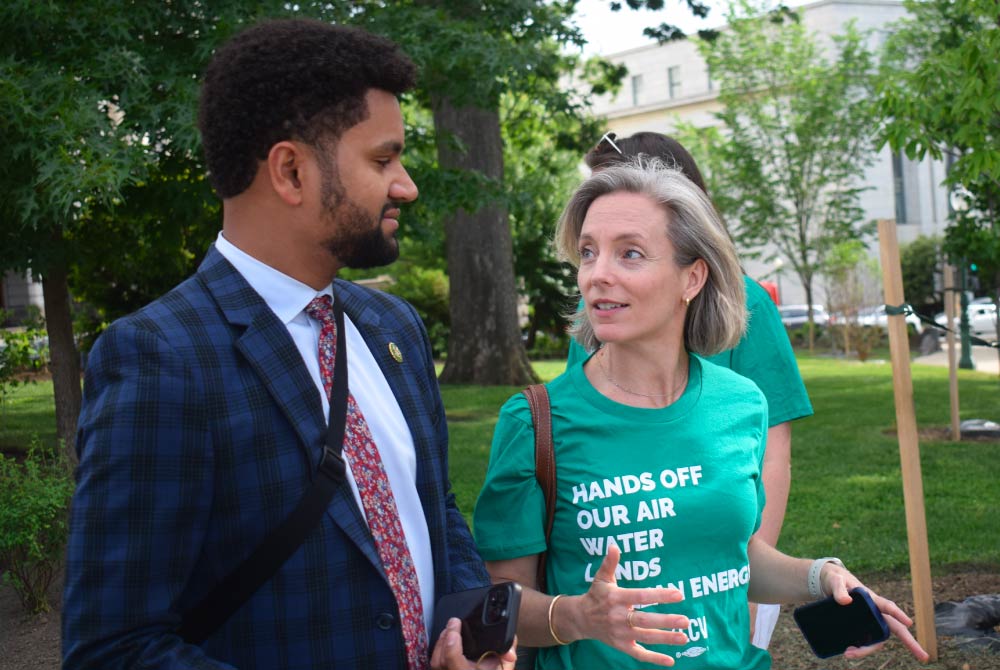
Top 5 Stories Worth Reading – June 2025
Jun 30, 2025
 Credit: Razer
Credit: Razer
Every week, we round up five of the best good climate news stories we’re celebrating. This week we’re covering new electric vehicle tax credit guidance, increasing numbers of clean energy installations, investments in rural clean energy, NYC’s climate-conscious budget, and a plan to prevent invasive species growth in Acadia National Park.

The Biden-Harris administration has released its final Foreign Entities of Concern Rule to help determine the eligibility of electric vehicles (EVs) for tax credits under the Inflation Reduction Act. Right now, about 40 EV models qualify for the up to $7,500 EV purchase tax credit, which will continue to change and be updated through 2029.
The rule aims to increase the number of EVs on the road by making them more affordable for consumers nationwide while at the same time protecting the American auto industry and the jobs of auto workers.
Source: U.S. Department of the Treasury

In the first quarter of 2024, the U.S. added 5,585 megawatts (MW) of new utility-scale solar, wind, and energy storage, a 28% increase from the same quarter in 2023. These new clean energy installations will generate enough electricity to power 1 million homes.
Also this quarter, total utility-scale solar installations in the U.S. surpassed 100 gigawatts of energy capacity, enough to power 7.5 million homes with reliable, clean energy. In total, clean energy installations in the U.S. have the capacity to power 68 million homes.
The pace of clean energy installations in the past several months is a promising sign for the future of the clean energy economy, and will help the country achieve the Biden-Harris administration’s goal of net-zero emissions by 2050.
Source: American Clean Power Association

The Department of Energy (DOE) has announced it will invest $78 million in 19 rural clean energy projects as part of the Energy Improvements in Rural or Remote Areas (ERA) program established by the Biden administration in the 2021 Bipartisan Infrastructure Law. To date, the ERA program is funding projects in 20 states and 30 tribal nations.
The new projects span from Alaska to rural Alabama and will help communities install solar, battery storage, power lines, and heat pumps, to name just a few of the projects funded by this investment.
“Through these transformative investments, rural and remote communities from coast to coast are able to map a clean energy future that revitalizes local economies and cuts the pollution that is fueling the climate crisis and driving environmental injustice,” said U.S. Secretary of Energy Jennifer Granholm.
Source: Canary Media

New York City is now the first major U.S. city to take long-term climate considerations into account when determining its budget. The process, called “climate budgeting,” aims to address the climate impacts of government spending.
With its goal of cutting emissions by 80% by 2050 in mind, NYC’s new climate-conscious fiscal year 2025 budget will invest $85 million in transforming the south Brooklyn Marine Terminal into an offshore wind development and allocate $4 million to enforcing carbon emissions reduction in the building sector.
Proponents of climate budgeting are hopeful that other cities will follow NYC’s lead and adopt climate budgeting into their own process to create more resilient and sustainable communities across the country.
Source: Bloomberg

A proposed co-stewardship plan by National Park Service (NPS) and Maine’s federally recognized tribes, collectively referred to as the Wabanaki, would permit tribal members to gather sweetgrass in Acadia National Park.
The seasonal harvesting of sweetgrass would allow for early detection of invasive plant species in areas that NPS does not monitor on an annual basis and promote sweetgrass growth through traditional methods. The NPS environmental assessment affirms that human manipulation not only improves the overall health of sweetgrass, but also has demonstrated an increase in abundance, upscaling stem density by 48% after two years.
Source: National Park Service
Check out the Power Source Blog and follow us on Instagram or Twitter for more Good Climate News every week.